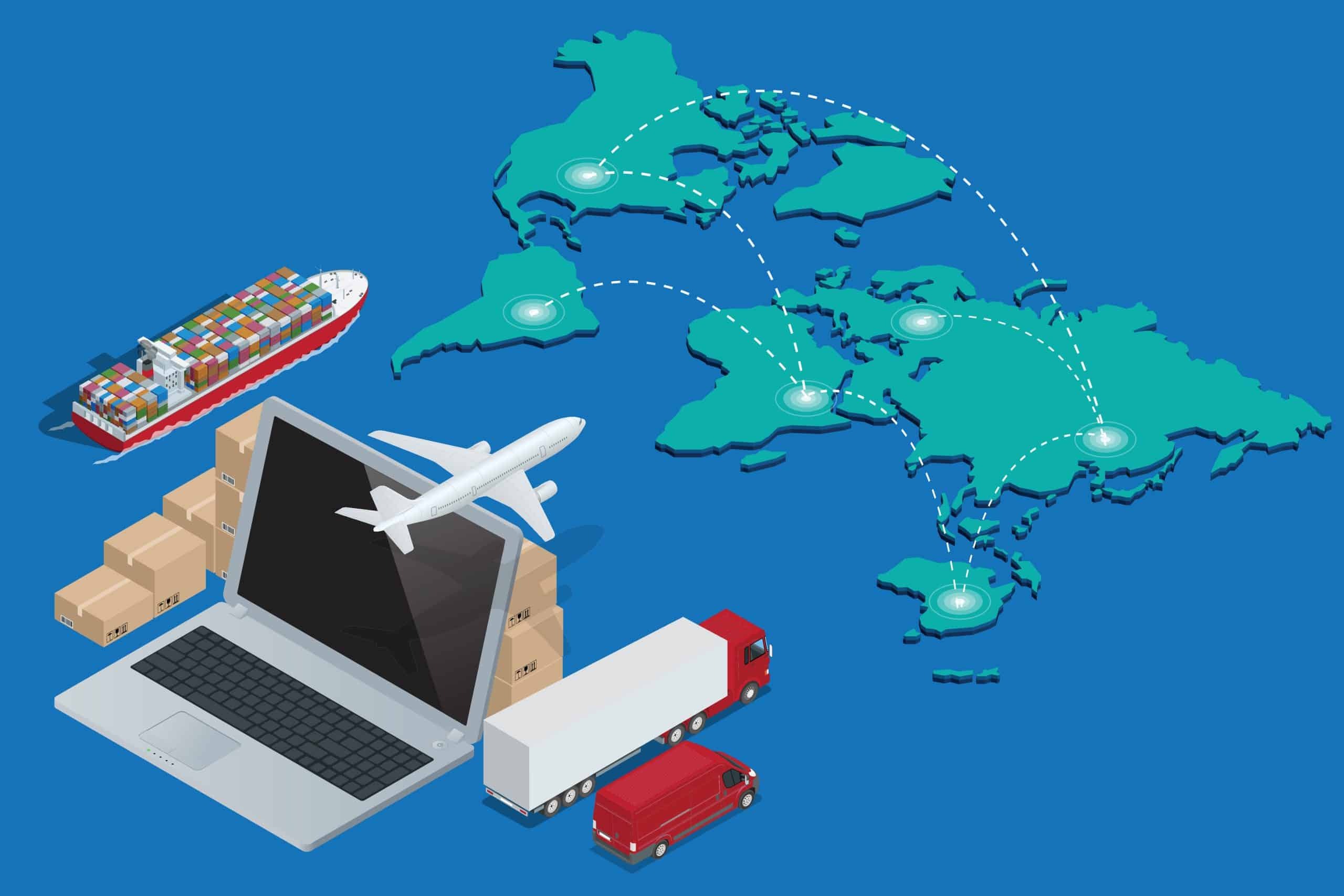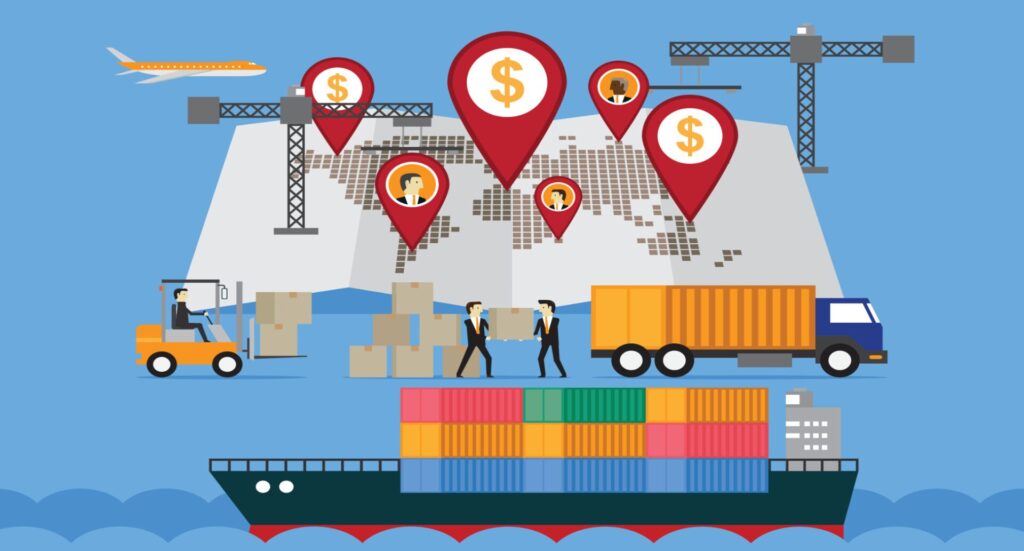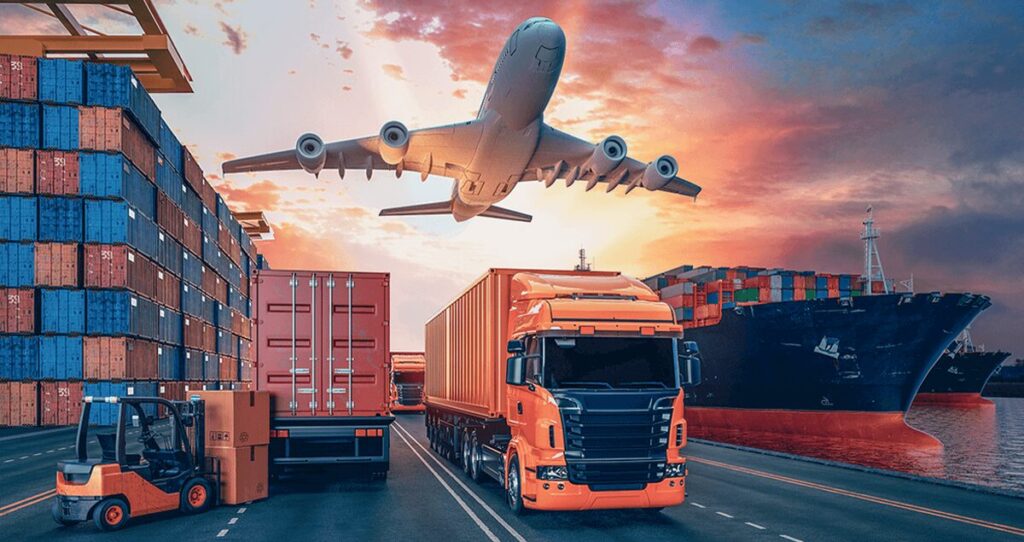Globe-Trotting Goods: International Shipping Costs and Strategies

In an era of rapid globalization, our world has transformed into a tightly-knit global village. The barriers that once hindered trade, communication, and collaboration across vast distances have dissolved, giving rise to vast interconnected markets.
Central to this globalized market is international shipping—the backbone of global commerce. Everyday products—from the coffee we drink to the smartphones we rely on—often have long, international journeys behind them. Yet, as goods travel across continents and oceans, the associated costs accrue and can greatly influence the final price points.
Understanding these costs is not only necessary for businesses that operate on an international scale, but also for consumers who indirectly bear these expenses.
This article breaks down the components of international shipping costs, like how global shipping costs are determined, how they impact our daily lives, and the numerous factors that influence them.
Whether you’re a business owner sourcing materials from another continent or a curious consumer wondering about the journey your products take, this article offers insights into the costs, regulations, and strategies. An informed understanding of international shipping costs can lead to better business decisions and smarter consumer choices.
Components of International Shipping Costs

Insurance
A protective measure, insurance provides coverage for goods in case they are damaged or lost during transit. Employing insurance ensures that businesses and consumers are not left vulnerable to unforeseen mishaps.
Packing Costs
Before goods are shipped, they need to be securely packed and the labor required to ensure products reach their destination safely receive compensation.
Terminal Handling Charges (THC)

Ports and terminals impose specific fees for the use of their facilities. These costs encompass the handling, loading, and unloading of goods.
Documentation Fees
International shipping involves a plethora of paperwork. From bills of lading to customs declarations, these documents incur fees for their production and processing.
Customs Duties and Taxes
When goods cross borders, they are subject to tariffs and taxes imposed by the destination country. These charges vary based on product type, origin, and specific international trade agreements.
Additional Fees
Beyond the primary costs, several other fees that might be incurred include demurrage (delay in unloading) and detention (extended use of containers). Individuals should inform themselves of other miscellaneous charges related to specific shipping scenarios .
Factors Affecting International Shipping Costs
Weight and Volume

Carriers base a significant portion of their fees on the weight and size of the cargo. The bulkier and heavier a shipment, the more space it occupies, leading to higher costs. Optimizing packaging can result in substantial savings.
Distance and Transit Time
The relationship between distance and cost is intuitive—the farther the journey, the higher the price. Faster shipping options, while more convenient, often come with a premium price tag. Balancing speed and cost is a constant challenge in international shipping.
Mode of Transport

Each mode of transportation—be it sea, air, or land—has its own pricing structure. While sea freight might be cost-effective for large shipments via a courier service to India, air freight offers speed. Land transport, such as rail and trucking, is required for connecting ports to hinterlands and final destinations.
Peak Seasons
Just like holiday airfares, shipping costs can surge during busy times of the year. Peak shipping seasons, driven by global events or holidays, can strain availability and drive up costs. Businesses need to anticipate these fluctuations and plan accordingly.
Fuel Prices
Fuel prices are a significant determinant of shipping costs. As global oil prices fluctuate, so do the expenses associated with powering ships, planes, and trucks. Staying updated on energy market trends can help businesses forecast potential cost increases.
Regulations and Trade Agreements

Each country has its own set of rules, regulations, and tariffs that can impact shipping costs. International trade agreements between nations can either simplify the process and reduce costs or introduce additional tariffs and barriers.
Strategies to Reduce International Shipping Costs
Consolidation
Grouping multiple shipments can lead to notable savings. By consolidating goods into fewer, larger shipments rather than several smaller ones, businesses can reduce per-unit shipping costs and enjoy bulk transportation benefits.
Opting for Slower Transit

While expedited shipping offers speed, it often comes at a premium cost. By planning ahead and opting for slower, yet more economical shipping methods, businesses can significantly reduce their shipping expenses without compromising on delivery.
Negotiating with Carriers
Long-term partnerships and volume commitments can be a gateway to discounts. By building strong relationships with carriers and regularly renegotiating terms, companies can secure better rates and terms that cater to their shipping needs.
Regularly Reviewing Routes
Trade routes and logistics are in constant flux. By routinely analyzing and reviewing shipping routes, businesses can adapt to changes, bypassing congested or more expensive paths for more cost-effective alternatives.
Utilizing Technology

The digital age brings with it a plethora of tools designed to streamline and optimize shipping. Leveraging modern software and platforms can help businesses automate processes, find better rates, and monitor shipments in real-time, leading to informed decisions and cost savings.
Mistakes to Avoid in International Shipping
Overlooking Documentation
Every international shipment requires a set of specific documents. Missing out on, or inaccurately filling in, paperwork can lead to delays, penalties, or even the confiscation of goods, resulting in losses.
Not Insuring Shipments
While insurance adds to the initial cost, it’s a safeguard against unforeseen damages or losses. Bypassing insurance exposes businesses to potential significant financial risks, especially when shipping high-value or fragile goods.
Not Monitoring Customs Regulations
Customs rules vary from one country to another and can change over time. Ignoring or not staying updated with these regulations can result in denied entries, penalties, or extended delays—costing time, money, and reputation.
In today’s globalized marketplace, a clear grasp of international shipping costs is invaluable for both businesses and consumers. As we’ve explored, numerous factors, strategies, and potential missteps shape these expenses.
By staying informed and proactive, all involved can more effectively steer through the complexities of global trade, ensuring both profitability and efficiency.
If you own an e-commerce business, we recommend you read our guide on reducing shipping and packaging costs allowing your e-commerce business to thrive and make you more money.




